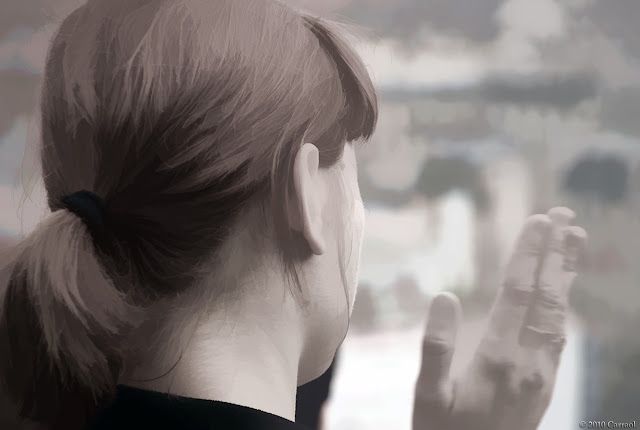 |
| La Fontaine de Médicis (Fountain of Medicis), originally known as La grotte du Luxembourg (The cave of Luxembourg), was commissioned in 1624 by the Marie de Médicis (Marie de' Medici), the second wife and widow of King Henri IV, and mother of King Louis XIII, who wanted to emulate la grotte de Buontalenti in jardins de Boboli in her hometown Florence. Designed by engineer Florentin Thomas Francine, it comprised of three niches and a pediment with coats of arms of France and Médicis, backed by la fontaine de Léda. The fountain was moved and refitted in 1861. Alphonse de Gisors restored the arms, and created a 50 meter water alley lined with trees. The new basin was filled with the The centerpiece sculpture, added in 1866 by Auguste Louis Ottin, depicts the cyclops, Polyphème, waiting to crush Galatée, who is holding Acis, with a boulder, and Pan faune and Diane chasseresse (Diana the Huntress) watching from each side. Acis et Galatée (Acis and Galatea) tells the story of a love triangle between the three main characters of Acis, a mortal shepherd, Galatea, a semi-divine nymph, and Poliphème. Poliphème murders Acis out of jealousy, as depicted in this work, but he is revived and turned into a fountain (or river by Neptune, depending on the telling). The Jardin du Luxembourg, referred to by locals as Luco. is a 224,500 m² public park--the largest in the city--designed in the French style in 1612. The park is centered around thePalais du Luxembourg, constructed between 1615 and 1627 for Marie de Medicis, mother of Louis XIII, and currently the home of the French Senate. The Jardin features two noteworthy fountas--the Fontaine de Medicis, a baroque fountain designed in 1624; and at the southern end, in an extension known as Jardins de l'Observatoire, Davioud, Carpaux and Frémiet's Fontaine de l'Observatoire, erected in 1873. |
 |
| Ver. 2 |
 |
| Faune Dansant by Eugene Louis Lequesne 1850. |
































